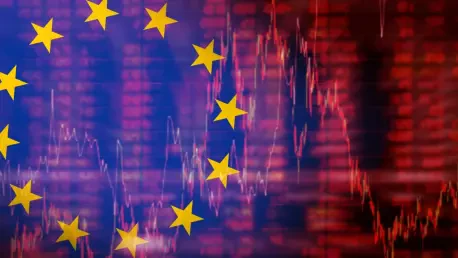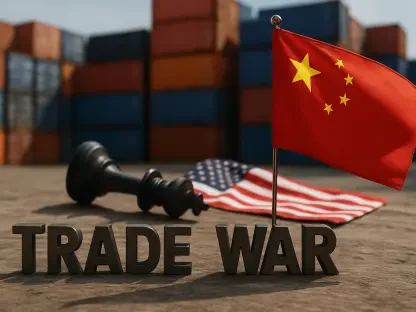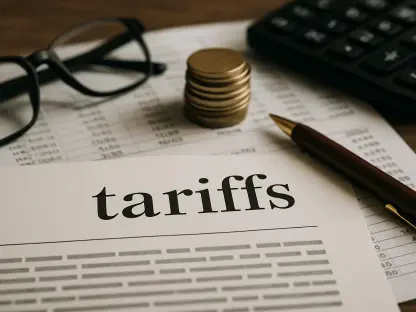Recent developments in global trade policies are threatening to increase economic turmoil, focusing particularly on the looming tariffs set to be imposed by the United States on European Union imports. With a 30% tariff announcement targeting goods from the EU, the landscape of international commerce faces potential upheaval. The ramifications of these tariffs extend across sectors such as automotive, pharmaceuticals, and technology, with significant consequences for both European manufacturers and global markets. The August 1 deadline is set, adding urgency to discussions surrounding these complex trade issues.
Implications for the Auto Industry
Rising Costs and Consumer Impact
The European automotive industry finds itself at the center of this storm, confronting the prospect of elevated tariffs that could significantly disrupt its economic contributions. Historically, tariffs on European cars imported to the U.S. have been modest at 25%; however, a proposed rise to 30% exacerbates pricing pressures. Such an increase is anticipated to inflate the costs of European vehicles entering the U.S. market drastically. Yale’s Budget Lab forecasts a potential price rise of 13.5% per vehicle, equating to an additional $6,500 on the sale price. These elevated costs are likely to put pressure on consumers, diminishing demand and adversely affecting sales of popular European brands like BMW, Daimler, and Renault.
The difficulties faced by these automakers could compel a reassessment of market strategies and pricing models. Industry players may need to pivot towards more innovative sales approaches or consider strategic partnerships to cushion themselves from the impact of these tariffs. Investors, mindful of these pressures, may likewise reevaluate their portfolios, potentially diversifying their investments away from volatile European equities and seeking more stable alternatives.
Strategic Repercussions for Manufacturers
This prospective downturn for European automakers coincides with ongoing economic strains caused by inflationary trends. Rising prices already pose challenges to maintaining market share in one of their most critical export destinations, the United States. As these brands grapple with higher operational costs and market realignment, a ripple effect could be felt throughout the supply chain, from parts manufacturers to dealerships.
Manufacturers may consider relocating production to non-European sites. While such moves could prevent tariffs, they’re expensive and time-intensive. Additionally, they must consider brand identity and production quality. Shifts could alter public perception and product quality. The stakes deepen as American automakers and foreign rivals gain leverage in the absence of European competition, possibly leading to longer-lasting consumer preference adjustments, reshaping market dynamics further.
Pharmaceutical Sector under Stress
Challenges for Healthcare Economics
The pharmaceutical industry also stands to be heavily impacted by tariffs, representing a substantial portion of U.S. generic drug imports from the EU. Adding tariffs could elevate costs for patients and insurers, as companies like Bayer and Sanofi ultimately face a margin crunch. These firms might find themselves tasked with balancing absorption of extra costs against the need to maintain competitive pricing, sparking essential operational reviews.
The scenario underscores potential shifts within the U.S. healthcare system, as services try to absorb the fiscal impact. Insurance companies like Anthem and Cigna may face escalated claims payouts amid higher medication costs. This could increase premiums for consumers or force insurers to revise their coverage options, translating into altered healthcare access and affordability outcomes for patients nationwide.
Opportunities Emerge Amid Challenges
Yet, amid the challenging landscape, opportunities arise for specific market players. Generic drugmakers in Asia, such as India’s Sun Pharma, may capitalize on this disruption, positioning themselves to gain market shares previously dominated by European counterparts. By filling the void created by costly EU imports, these companies can reshape competitive dynamics within the U.S. pharmaceutical market.
Such a transition may also prompt EU pharmaceutical entities to reassess their logistical frameworks, considering partnerships or joint ventures to retain their U.S. foothold. Despite the overarching problems, this period could catalyze strategic innovation and collaboration, fostering resilience amid adversity. Navigating these changes requires a delicate balance of short-term mitigation and long-term strategy realignment, emphasizing a proactive approach.
Technology Sector’s Supply Chain Dilemma
Semiconductor and Software Challenges
For the tech industry, prevailing concerns focus predominantly on potential supply chain disruptions rather than direct cost implications. The European Union holds a critical position in semiconductor manufacturing and software engineering. New tariffs could drive tech companies like ASML and Siemens to either relocate production facilities closer to U.S. soil or else risk declining sales across the Atlantic. Companies forced to take alternate paths might face cost increases due to the complexity of supply chains.
Amidst these supply chain shifts, U.S.-based tech giants like Apple may experience operational challenges. They may use EU-made components, such as iPhone glass, in their products, underscoring the interconnectedness of technology supply chains and the hurdles that tariffs impose. Potential consequences could entail production delays or increased costs, necessitating suppliers and tech firms to devise alternative sourcing strategies and diversify component procurement.
The Potential for Retaliation and Strategic Adjustments
An anticipated retaliatory response by the European Union—home to a significant trade surplus of $236 billion—could further complicate matters for tech companies. European authorities might impose reciprocal tariffs targeting key American exports, including agricultural goods valued at $21 billion annually. This retaliatory exchange raises concerns over broader economic ramifications, fostering uncertainty across financial markets and investor sentiment, with a full-scale trade war becoming a palpable risk.
In response, the recommendation for stakeholders is to judiciously manage risks and safeguard investments via diversification strategies. This includes consideration of investments in traditionally safe assets such as gold, which serves as a hedge against market volatility and currency fluctuations. Given the complex web of interdependencies, technology firms and investors must remain vigilant and flexible, capitalizing on opportunities while safeguarding against potential downturns within a dynamic global economy.
Navigating the Economic Landscape Ahead
Strategic Investments and Market Preparation
From a broad economic viewpoint, the likely ramifications of these tariffs are significant, as evidenced by conservative projections indicating a 0.7% GDP contraction in 2025. Tariffs occurring now press the Federal Reserve toward stimulating activities by potentially lowering interest rates, which may enhance U.S. bonds’ appeal against equities. Investors might consider shifting their positions in anticipation of these developments, targeting assets such as long-term Treasury bonds that typically gain value under conditions of decreased interest rates and heightened uncertainty.
Looking further into 2025 and beyond, expected subdued growth within the EU, with a nominal 0.1% increase, calls for adaptive strategies that anticipate diminishing export volumes and rising production costs. Such projections suggest a shift in investment preferences away from cyclical sectors like luxury goods and travel, emphasizing more defensive industries including utilities and healthcare. These sectors exhibit resilience, providing more stable returns amid fluctuating market conditions.
The Urgent Path Forward
Recent shifts in global trade policies are poised to escalate economic instability, with particular attention on the impending tariffs to be levied by the United States on European Union imports. A 30% tariff is set to target a wide range of goods from the EU, signaling potential upheaval in international trade relations. This development has far-reaching implications, affecting sectors like automotive, pharmaceuticals, and technology. The imposition of these tariffs will likely hit European manufacturers hard, disrupting global markets and supply chains. Industries that rely heavily on transatlantic trade are bracing for significant impacts, anticipating changes in cost structures and competitive dynamics. The August 1 deadline looms, heightening the urgency of negotiations and discussions that attempt to address and resolve these complex trade issues. Both sides are eager to mitigate adverse effects and find a path forward that balances national interests with the broader need for economic stability and cooperation.









